FEMALE-HAPPY-INTERNATIONAL PLACES IN POBLENOU
FEMALE
“Filter by Grammar”
Twitter database is filtered by text includes “-ada” that is used in the end of adjectives for female self in Spanish language. Additionally tweets that include “novio” “moda” terms are filtered. The map shows us the biggest shopping mall of Barcelona, Forum!
Then we visited the site in order to see the convenience of our data. In the shopping mall as it is obvious in the photos that in different part of the mall there is the density of different genders, at waiting halls and corridors it is obvious the men dominancy but in the stores and payment points we mostly saw women. It does not mean that the only visiter of the mall is women but means that they are mostly the ones who visits for shopping and therefore the real users!
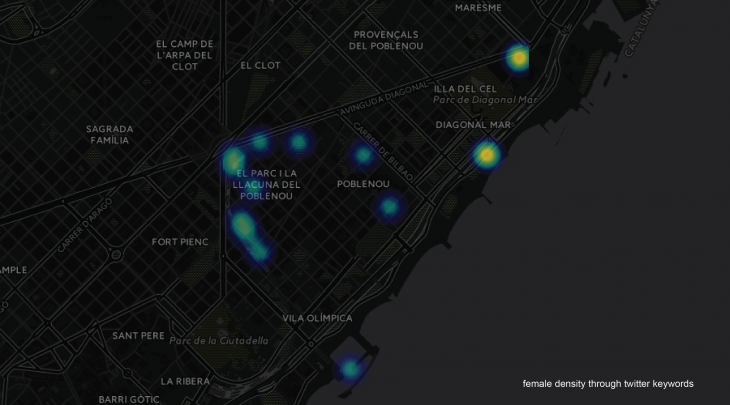
In our filtering process, we found out that Diagonal Mar was the most female place.
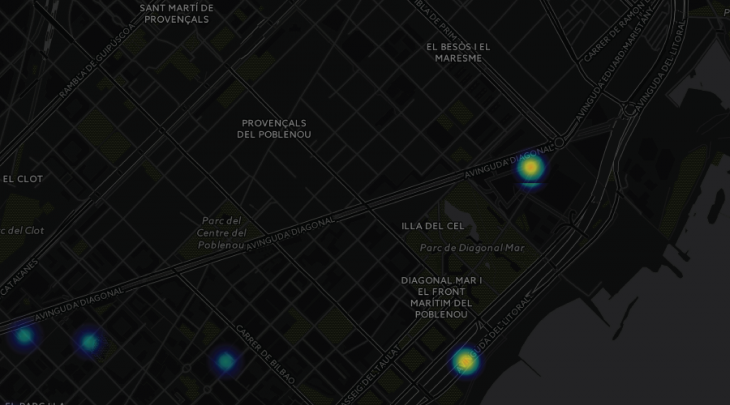
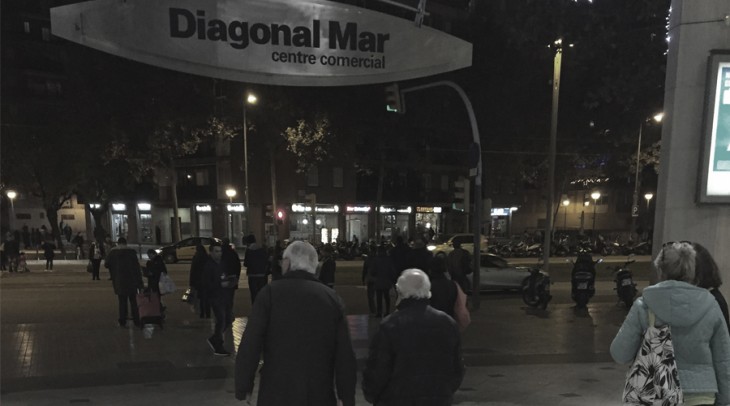
Entrance of Diagonal Mar
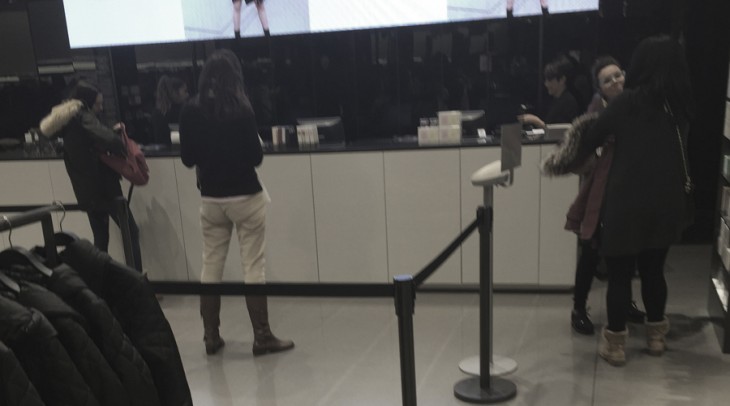
Inside of a Store in Diagonal Mar
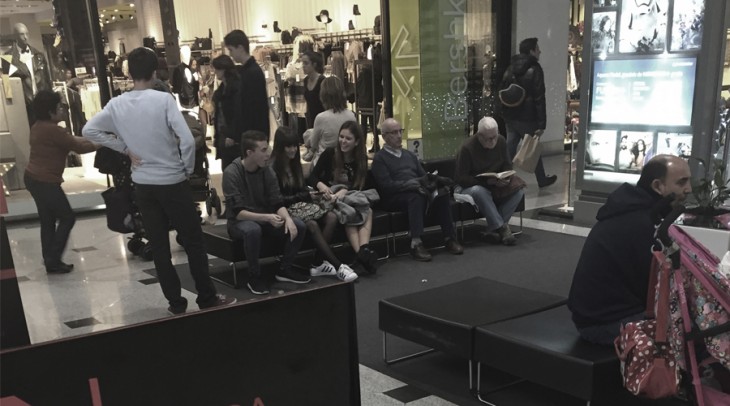
Inside the building of Diagonal Mar
HAPPY
“Scent of Place”
From very beginning of the workshop we have been discussing about the meaning of ´Happy places´ because the first thing that comes into mind was to find the places where includes happy people. Through our datasets we tried different methods to find places with happy, positive people. However there have always been some points that did not seem true. First we selected happy words from the dataset “iaac_tw2” to see the density of the tweets. But does it really mean that a place includes (even though mostly) happy people, is a happy place? Let´s think that there is a place we know 60% of people who are visiting are enjoying the place. What about the rest of the people who feel disturbed about the place ?
In the end we decided to take the issue of “happy place” as a happiness of urban site. Functioning, being dense, diverse, having things for everyone would be a good quality for a site. Then we took information from the dataset “iaac_masa” about the population and area of places to see the density, after seeing the density we also looked for the languages through twitter database and chose the places who has more language spoken (17 languages was the highest score). Diversity is as we mentioned before is important for an urban space that makes it functioning not only for a specific part of the population but for everyone.
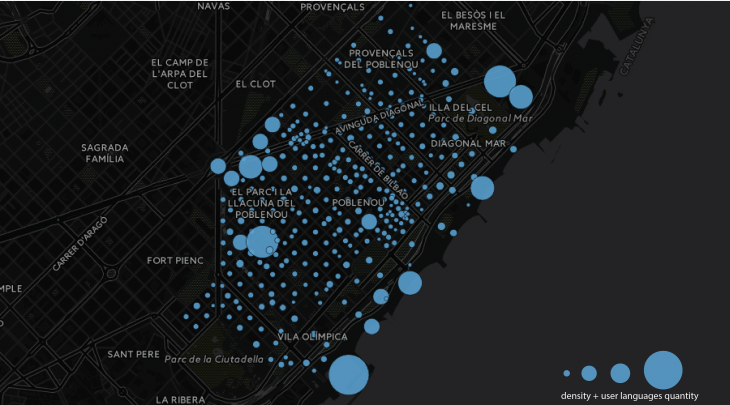
In our filtering process, we found out that Barceloneta coast was the happiest place.
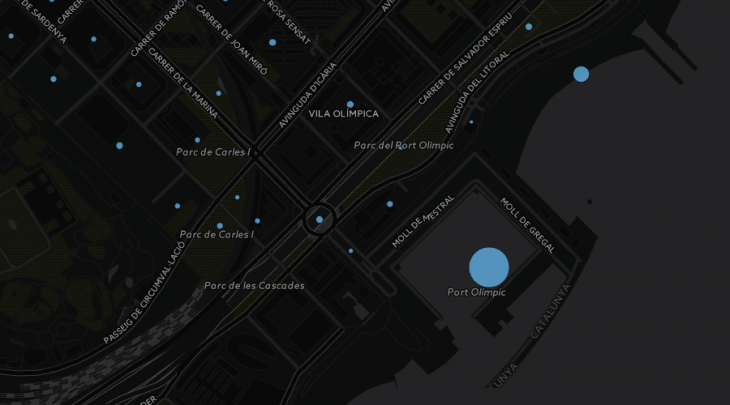
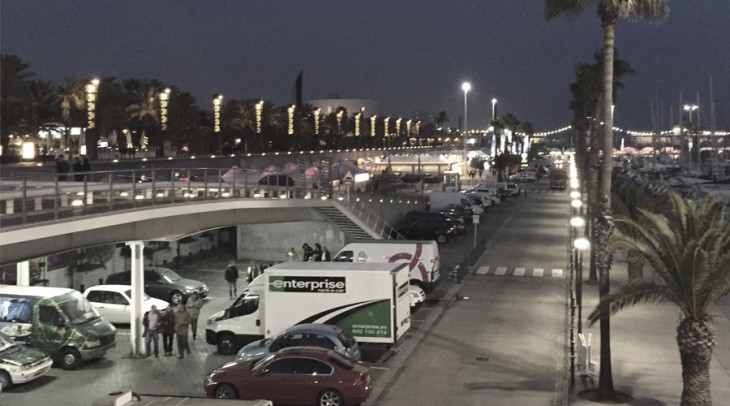
Barceloneta Coastline
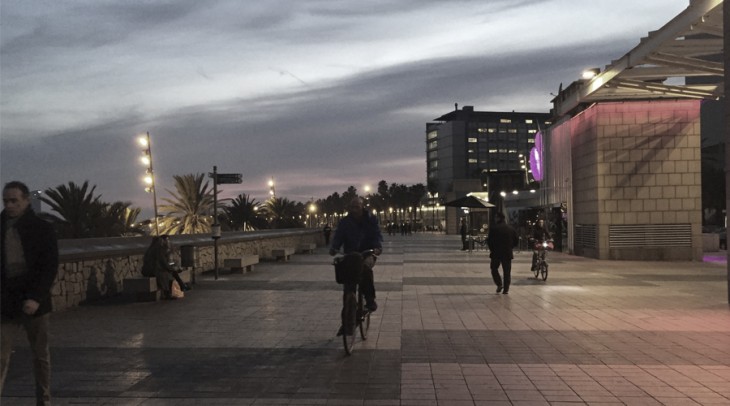
Barceloneta Coastline
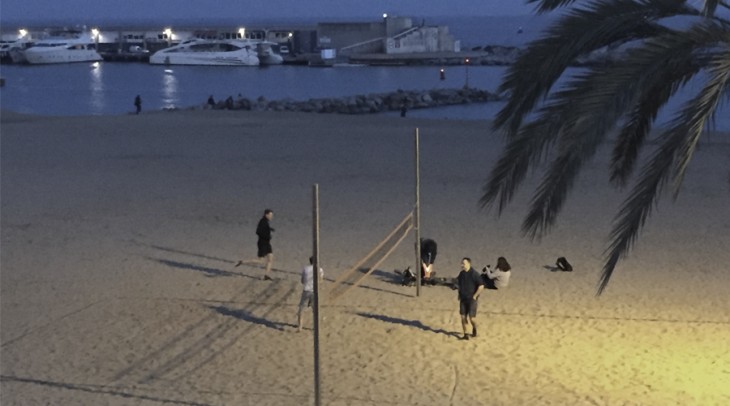
Barceloneta Coastline
INTERNATIONAL
“Network of Places”
The ides is to show areas where multi-lingual also buildings that include “museum” “tourism” in their name. The data shows us the most international point is around the Museo Disseny at Glories. Then we visited the site and discovered that there are several places which might cause the multi-lingual twitter use there such as the biggest flea market of barcelona, Museo Disseny, torre agbar, Catalan National Theater etc. As you can see in one of the photos even though in Barcelona it is not so common to see english billboards or advertisements in this are it is quite common. The names of events and the explanations of events are mostly with english translation.
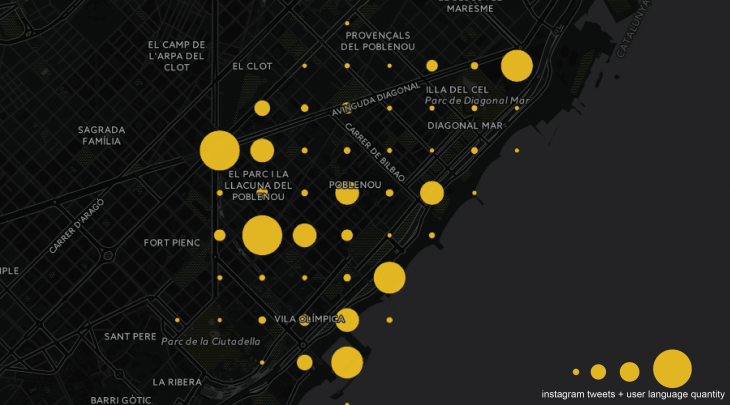
In our filtering process, we found out that Museu Disseny at Glories was the most international place.
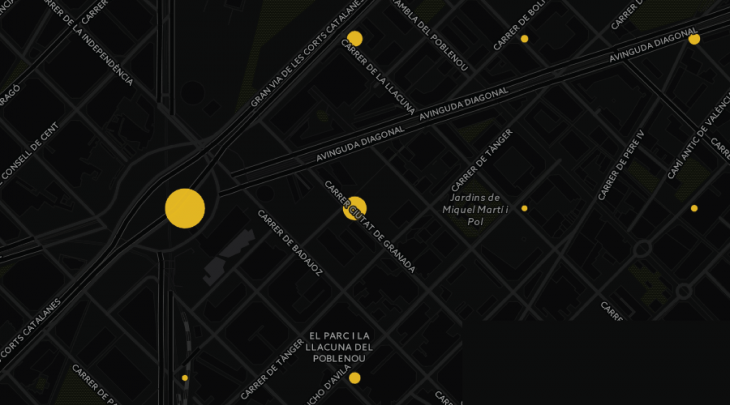
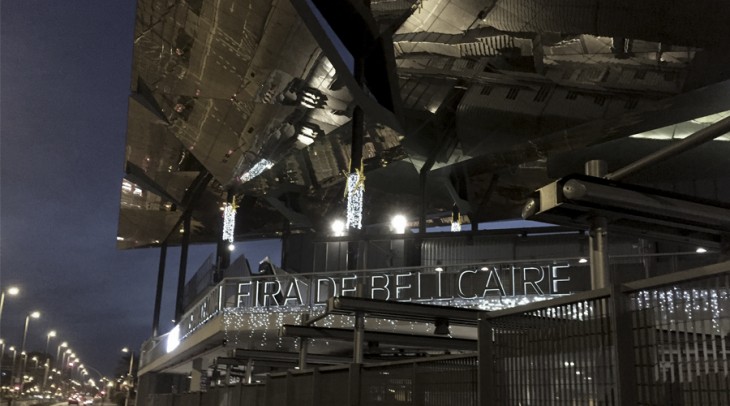
Surrounding of Dissenny Museum outside.
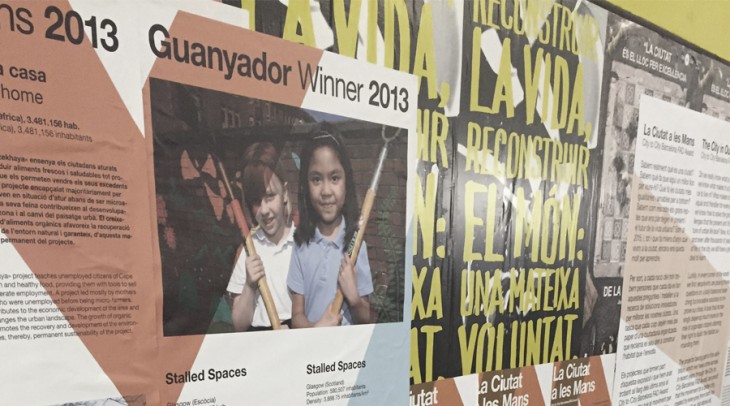
Interior of Dissenny Museum Glories.
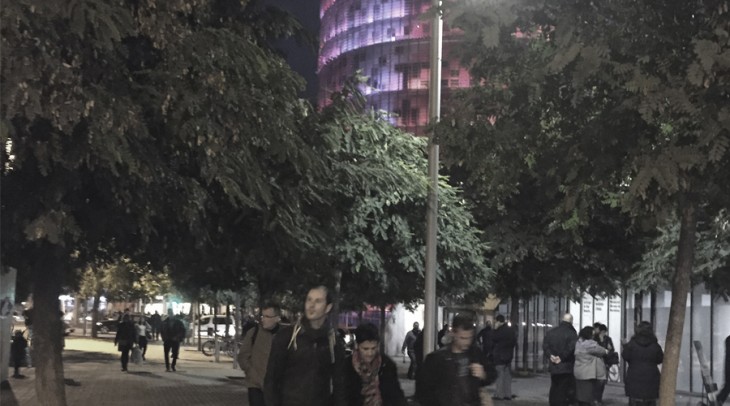
Surrounding of Disseny Museum (Agbar Tower)
Happy-Feminine-International Places is a project of IaaC, Institute for Advanced Architecture of Catalonia developed at Master in City and Technology in 2015 by:
Students: ?lkim Er, Seda Tu?utlu
Faculty: Mar Santamaría and Pablo Martínez
